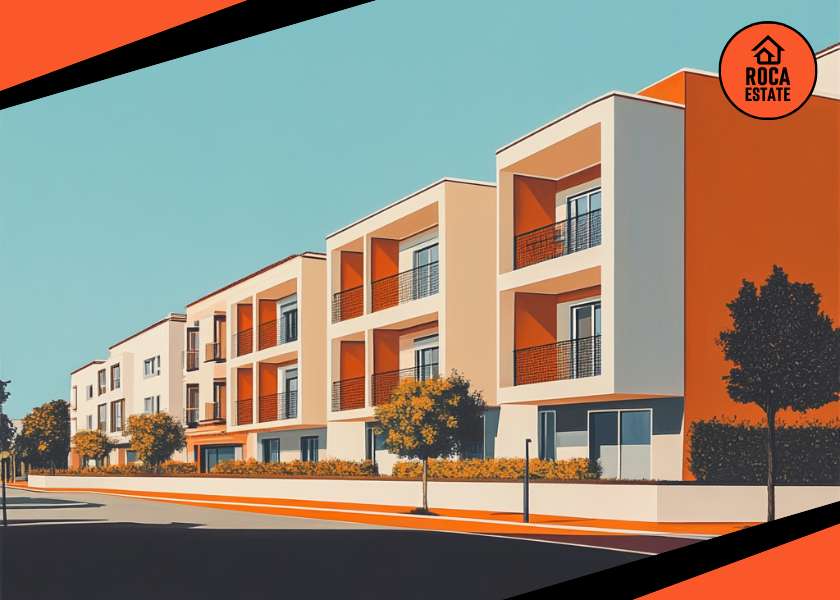Monthly Market Intelligence – Construction Indicators, March 2025
The March 2025 release of Portugal’s construction sector indices provides critical insights for stakeholders in commercial real estate investments in Portugal. While the sector remains in a growth phase, the latest figures reflect a subtle deceleration in momentum, revealing emerging asymmetries between segments and signaling that investment strategies should adapt accordingly.
Slowing Output Growth Underscores Sector Realignment
The construction production index posted a year-on-year increase of 1.3% in March, down from 2.0% in February, reflecting a 0.7 percentage point deceleration. Disaggregated data reveals a clear divergence between the sector’s two principal components:
- Building construction advanced by 2.3% year-over-year, a decrease from 3.0% in the previous month, yet still indicative of a resilient private sector appetite for development.
- Civil engineering, by contrast, contracted by 0.3% after posting positive growth in February, suggesting waning momentum in public infrastructure and utility-related projects.
This bifurcation signals a shift in investment dynamics. Commercial developers may continue to find opportunities in urban core development and asset repositioning, while infrastructure-aligned projects could face headwinds due to regulatory delays, funding constraints, or shifts in policy priorities.
Employment Expansion Paired with Wage Deceleration
Labor market indicators present a more favorable backdrop. Employment in the construction sector rose 2.8% year-over-year in March, up from 2.0% in February, with a strong monthly gain of 0.9% – notably higher than the 0.1% monthly increase recorded in March 2024.
Simultaneously, the rate of remuneration growth eased to 7.9% on an annual basis, down from 8.3% the prior month and markedly below the double-digit growth levels observed in mid-2024. This trend suggests that wage pressures may be normalizing, which could stabilize cost projections for future developments.
For investors, this presents a dual narrative: capacity expansion through increased employment supports continuity in project execution, while moderated wage inflation may mitigate financial pressures on construction margins.
Strategic Implications for Commercial Real Estate Investment
The composite picture emerging from the March data suggests the following considerations for portfolio managers and institutional investors:
1. Favorable Conditions Persist in Vertical Construction
The building construction segment continues to exhibit sustainable growth, supported by persistent demand in urban commercial and mixed-use real estate. With construction output still expanding, albeit at a slower rate, this segment remains investable – especially in Lisbon, Porto, and second-tier cities with growing commercial activity.
2. Civil Engineering Construction May Delay Key Enablers
The decline in civil engineering output is notable. As this segment often underpins infrastructure supporting commercial hubs, such as transport networks, utilities, and logistics platforms, investors should be cautious when underwriting projects whose value propositions depend on external infrastructure timelines.
3. Labor Conditions Signal Capacity Stability
The employment uptick and simultaneous easing of wage pressures indicate a stabilizing labor market. Investors should interpret this as a positive input for long-term planning, allowing more accurate forecasting of project delivery schedules and cost baselines.
Forward-Looking Considerations
Over the next quarter, several macro and sector-specific indicators warrant close monitoring:
- Monetary Policy Direction: Should the European Central Bank maintain or reduce interest rates, borrowing conditions may ease, potentially revitalizing leveraged commercial development.
- Foresight into Upcoming Projects: Trends in permitting activity and new project announcements will help investors gauge forward demand and sector confidence.
- Construction Input Volatility: Despite stable labor costs, volatility in materials pricing and supply chain disruptions – particularly in concrete, steel, and imported components – remain key risks to cost structures and delivery timelines.
Strategic Outlook
The March data does not call for retrenchment, but it clearly advises recalibration. Investors with exposure to commercial real estate investments in Portugal should prioritize high-quality assets, location resilience, and income durability. Opportunistic strategies must be tempered with rigorous stress testing and conservative assumptions.
Risk-adjusted returns will favor investors who balance opportunism with discipline, focusing on executional reliability, alignment with demographic and commercial trends, and margin resilience under multiple scenarios.
For deeper market insights, project advisory, and strategic asset allocation support, contact Roca Estate to explore our latest research and investment solutions.
Index of Production in Construction
Source of analysis link




































































































